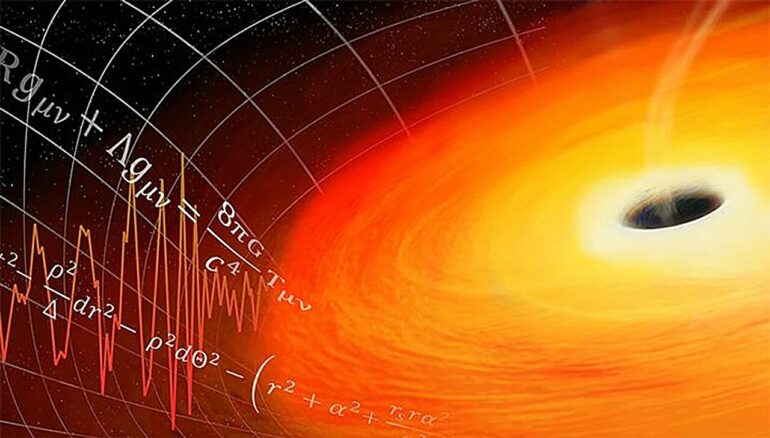UMass Dartmouth Ph.D. students Tousif Islam (lead author) and Feroz H. Shaik, alongside Assistant Professor Vijay Varma and Associate Professor Scott Field (mathematics), recently published findings, on the pre-print server arXiv, that include the identification of a binary black hole system that was most likely formed through dynamical capture and whose collision produced the second fastest-moving black hole observed (denoted GW191109 by astronomers).
“One of the key goals of gravitational wave astronomy is to understand how black holes and their binaries form in nature,” said Varma.
“Fast-moving black holes can get ejected from their host galaxies, rendering them unable to merge with other black holes to form even heavier gravitational singularity like the behemoths that produced the gravitational wave signal GW190521. Observations of fast-moving black holes can provide us vital insights into how often nature allows heavy black holes to form through repeated mergers.”
The team’s analysis would have taken 65 years to complete on a personal laptop, but using high-performance supercomputers, the analysis was completed in about one week. The supercomputers were made available through the Center for Scientific Computing and Data Science Research (CSCDR), the Massachusetts Green High Performance Computing Center, and Anvil (maintained by Purdue University and made available through ACCESS), allowing the group to reanalyze gravitational-wave datasets produced by the LIGO-Virgo-Kagra collaboration.
The project included collaborators from Australia, New Zealand, Rochester Institute of Technology, and the University of Nevada Las Vegas, many of whom participated in a spin-off study after discovering the first evidence of a fast-moving black hole in January 2022. At the date of this article’s publication, these are the only two fast-moving black holes that have been observed—the second one being identified in the current study for the first time.
“This black hole is moving at about one-third the speed of the first one we observed, only about 1 million miles per hour, or Mach 1500,” said Field. “That’s still fast by human standards, but not quite fast enough to be confidently ejected from its host environment like GW200129, which is the event we analyzed back in January of 2022.”
The team also found hints of a binary black hole system formed through dynamical capture. This is unlike the standard formation mechanism from binary star systems (like Star Wars’ Tatooine) that orbit around a common center of gravity.
In binary star systems, sufficiently massive stars will eventually run out of fuel for their fusion process and die in a supernova explosion that leaves behind a black hole. When both stars collapse into black holes, they can form a binary black hole system. However, another way to potentially form binary black hole systems is for two individual black holes roaming around a star cluster to “capture” each other.
“Despite being a new field of astronomy, kicked off in 2015 with the first observation of gravitational waves by LIGO, it is exciting to see that we can already start answering questions about how black hole binaries form in nature,” said Varma.
“However, these exciting signals also coincide with some noise artifacts in the detectors, which means that we need more observations to better understand such binaries. The LIGO detectors are currently in their fourth observation run after undergoing improvements in sensitivity, and we hope to see many such signals soon!”
Islam and Shaik are Engineering and Applied Science—Computational Science and Engineering (CSE) PhD students. Islam will be defending his PhD next month and has a postdoctoral fellowship position lined up at the Kavli Institute of Theoretical Physics (KITP) at UC Santa Barbara. Shaik, the third author on this paper, is on track to graduate within the next year.
“It’s an incredibly rewarding moment to find a second fast-moving black hole along with identifying a binary black hole system that was possibly formed through dynamical capture,” said Islam. “Our research not only contributes an exhilarating chapter to the exploration of these astrophysical phenomena but also highlights the state-of-the-art capabilities of the Gravity Research Group at the CSCDR.”
The team has created a catalog of posterior samples associated with this research including 47 binary black hole gravitational wave events from 2015–2020 and a series of visual graphics resembling and explaining the “kick” and “spin” posteriors for GW200129.
More information:
Tousif Islam et al, Analysis of GWTC-3 with fully precessing numerical relativity surrogate models, arXiv (2023). DOI: 10.48550/arxiv.2309.14473
Provided by
University of Massachusetts Dartmouth
Citation:
Researchers study fast-moving black hole to better understand formation of black hole binaries (2023, October 23)



